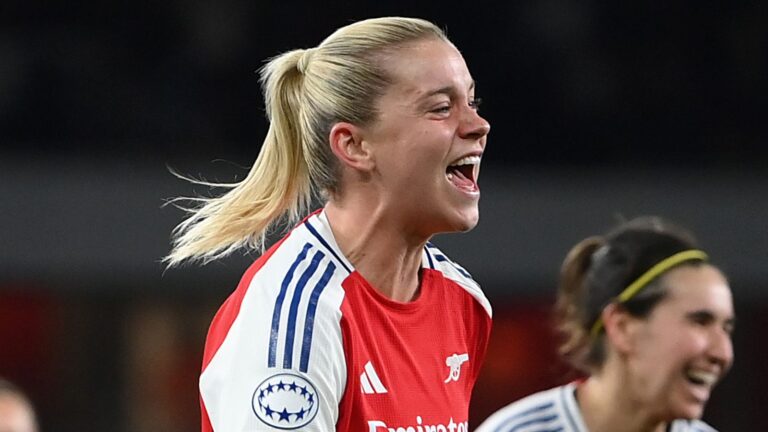Football, the world’s most popular sport, has embraced technology to enhance fairness, accuracy, and entertainment. From goal-line technology ensuring precise goal decisions to VAR (Video Assistant Referee) correcting crucial calls, the game has evolved significantly. While these innovations have sparked debates, there is no denying their impact on modern football.
In this article, we explore how technology is transforming football, covering VAR, goal-line technology, wearable performance trackers, AI-driven analytics, and more.
1. The Rise of Technology in Football
For decades, football relied solely on referees and linesmen to make decisions. However, with fast-paced gameplay and high-stakes competitions, errors became inevitable. This led to the introduction of advanced technologies to assist officials, improve player performance, and enhance fan engagement.
Some of the most impactful technologies include:
- VAR (Video Assistant Referee)
- Goal-Line Technology (GLT)
- Semi-Automated Offside Technology
- Wearable Fitness & Performance Trackers
- AI & Data Analytics in Football
- Smart Ball Technology
2. VAR (Video Assistant Referee): A Game-Changer?
Introduced in: 2016 (trial phase), 2018 FIFA World Cup (full implementation)
How it works: VAR is used to review four key situations:
- Goals and goal-related offenses (e.g., offsides, fouls)
- Penalty decisions (awarding or overturning)
- Direct red card incidents
- Mistaken identity in bookings
Pros of VAR:
✅ Reduces referee errors: Helps correct wrong decisions that could change match outcomes.
✅ Increases fairness: Prevents controversial goals or penalties.
✅ Enhances accuracy: Replays and slow-motion analysis ensure the correct call.
Cons of VAR:
❌ Delays the game: Stoppages for reviews can disrupt momentum.
❌ Subjectivity remains: Interpretation of fouls or handballs still varies.
❌ Removes spontaneity: Players hesitate to celebrate due to potential VAR overturns.
Despite criticism, VAR has significantly reduced major refereeing errors, though refinements are still needed.
3. Goal-Line Technology: No More ‘Ghost Goals’
Introduced in: 2012 (FIFA Club World Cup), 2014 FIFA World Cup
Goal-line technology (GLT) eliminates disputes over whether the ball crossed the goal line. It uses high-speed cameras and sensors inside the ball to detect its exact position.
Key Features of Goal-Line Technology:
- Uses 7+ cameras per goalpost.
- Sends an instant alert to the referee’s watch when a goal is scored.
- Operates within one second, avoiding game delays.
Memorable Moment:
🏆 Frank Lampard’s disallowed goal (2010 World Cup) – England vs. Germany
- Lampard’s shot clearly crossed the line but wasn’t given, leading to calls for technology in football.
Since its introduction, GLT has been 100% accurate, ensuring fair goal decisions.
4. Semi-Automated Offside Technology
Introduced in: 2022 FIFA World Cup
This AI-driven system detects offsides faster than traditional VAR reviews.
- Uses 12 tracking cameras per stadium to monitor players.
- A sensor inside the ball tracks movement at 500 times per second.
- Provides instant offside alerts to referees.
This reduces VAR delays and ensures quicker, more accurate offside calls.
5. Wearable Technology & Performance Tracking
Modern footballers use GPS trackers, heart rate monitors, and motion sensors to analyze their performance.
Benefits:
📊 Prevents injuries – Monitors fatigue and workload to avoid overexertion.
⚡ Optimizes training – Tracks sprint speed, distance covered, and acceleration.
📉 Tactical insights – Helps coaches adjust formations and playing styles.
Top teams like Manchester City, Barcelona, and Bayern Munich rely on these tools to gain a competitive edge.
6. AI & Big Data Analytics in Football
AI-driven analytics have revolutionized how teams analyze opponents, scout players, and develop strategies.
How AI Helps in Football:
- Predicts match outcomes using historical data.
- Identifies player weaknesses to target during games.
- Enhances recruitment by analyzing thousands of players worldwide.
Top clubs like Liverpool and Real Madrid use AI-based scouting for transfers, reducing risks in signing new players.
7. Smart Ball Technology: The Future of Football?
FIFA introduced Adidas’ Connected Ball in the 2022 World Cup, equipped with an in-built sensor that tracks:
⚽ Ball speed and movement
📏 Precise pass accuracy
🖥 Real-time match analysis
This innovation improves decision-making and could be widely used in the future.
8. Fan Engagement & Virtual Reality (VR) in Football
Technology has also changed how fans experience football.
🎥 VAR replays & interactive broadcasts – Fans can watch decisions live.
📱 Augmented Reality (AR) apps – Stadiums offer AR stats on player performance.
🎮 VR Match Viewing – Some leagues experiment with VR headsets for immersive viewing.
These advancements make football more engaging and accessible worldwide.
9. Challenges & Ethical Concerns of Technology in Football
Despite the benefits, technology in football has sparked debate:
⚠️ VAR controversies – Inconsistent handball and offside decisions frustrate players and fans.
⚠️ Game flow interruptions – Frequent reviews disrupt the natural pace.
⚠️ Over-reliance on AI – Critics argue football should retain its human element.
Finding the right balance is crucial to maintaining the sport’s excitement while ensuring fairness.
10. The Future of Technology in Football
Looking ahead, we can expect even more innovations:
🔮 Fully automated VAR decisions using AI.
🔮 Biometric sensors tracking player health in real-time.
🔮 Holographic referees for virtual match officiating.
With constant advancements, technology will continue to reshape football while preserving its essence.
Conclusion
Technology has undeniably transformed football, making it fairer, faster, and more data-driven. From VAR correcting decisions to wearable trackers improving fitness, these innovations enhance both the playing and viewing experience. While debates over VAR and AI remain, the future of football lies in balancing technology with the sport’s traditions.
What do you think? Has technology improved or complicated football? Let us know your thoughts! 🚀












